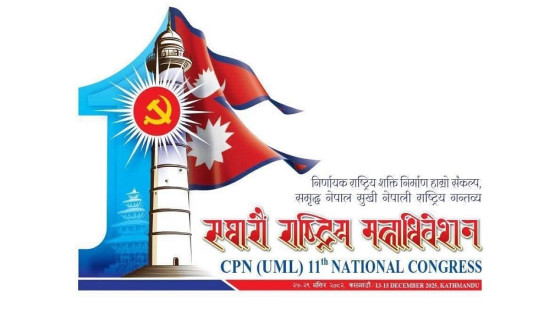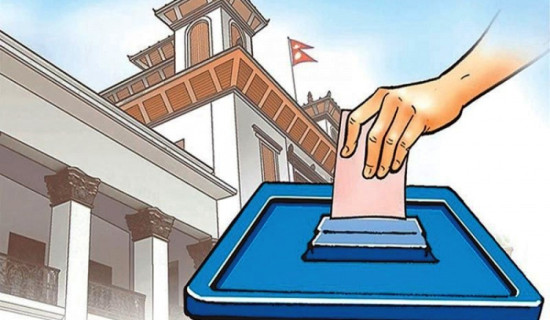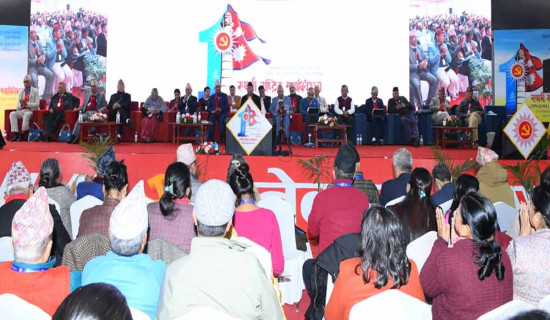- Monday, 15 December 2025
News Media Caught Napping
Competition is stiff for attracting audiences. New avenues of news information channels have eroded the traditional base of the media with longer history. Newspapers, starved of advertising, have thinned. For the revenue cake has not grown apace with the spurt in newspaper outlets. Which all the more reiterates the need for quality service so that the best survives. The November 3 massive earthquake in west Nepal offered a stern reminder to news outlets the onerous task of stretching and sticking deadlines.
Doing the dedicated best also during odd and unearthly hours pays rich dividends. But the practice of early to bed and late to report does not give any competitive edge to any morning daily newspaper. An earthquake — for that matter any unpredictable event — arrives without warning. It is unpredictable. Alert and energetic news outlets, therefore, stretch their deadlines to the brim in order to offer the latest newsworthy reports.
Advancing the deadline for putting the newsroom to bed and retire early found the unsung heroes of newsroom were caught napping on November 3. A tremor of 6.3 on the Richter scale struck west Nepal with its epicentre in Jajarkot. Nearly 150 lives were lost and more than that number were left wounded. Virtually all outlets in Nepal missed the report, including major print media that had apparently closed shop at the not so professional hour of before midnight.
Quake deadline
At the break of dawn, audiences abandoned the papers for online outlets, most likely not the newspaper online versions. Such lapses happen everywhere, but not frequently. The print media carried the story the following day, November 5. The delayed coverage was generally satisfactory. But the Gorkhapatra that day stole the march over the rest in making up for the initial lapse. It should serve as a prototype for itself and all others. In future, too, such prompt pro-active swing into action would do a swell of professional job.
The rush to call it a day before the dead of night found them less responsive to the demands of the job. Earth-shaking news does not happen every day. But anything can happen anywhere anytime. Prime time at one or the other time zone across the world is a permanent feature. News agencies and the round-the-clock active news outlets, therefore, make it a point to assign late night editor(s) to check for the latest newsworthy items filed by own staff reporters or news agencies. They also tune to other channels of the print and broadcast variety plus, of course, the online news outlets.
In The Rising Nepal, a stone editor began to be assigned from the mid-1980s to check the ticker — then known as the teleprinter that churned out news supplied directly by agencies like AFP and AP. The job included last minute checking on page proofs and headlines, photo placements and captions, among other things. If a news hole required an appropriate filler or if a page had excess news, the stone editor decided which item to shed and which to be reduced in length.
Why the “stone” editor designation? Well, during the earlier days of less sophisticated printing press days, the hand composed, linotyped or monotyped compositions were laid out on a metal plate bordered on four sides with metal sheets to hold them together. Before feeding the framed content to the printing press, screws and other paraphernalia were lightly struck by small light hammer like tools so that they did not bulge out and spill all over the place, rendering the work in a dismantled waste.
The Stone editor could check the ticker for any flash news, even as the paper started getting printed. If something very important broke out, the editor halted the page to insert it in a tightly edited story that gave the micro-gist of the late arrival carrying the heading “Late News” or “Stop Press”. The idea was to do the best to inform the readers as much as possible without causing a major disarray in the distribution department.
If a news development was too important to be restricted to a tiny spot or only as a filler on the front page, the small space allocated on the front page could include a notice that the detail was to be found on a particular inside page, where some less important item of sizeable length would be chopped off partially or fully to accommodate the latest development more decently.
Work environment
In publishing houses that installed offset printing press in the 1980s, the metal type font was dispensed with and the speedier computers were put to work, which originally came to be known as “photo composing” in Nepal. In the case of Gorkhapatra Sansthan that brings out the banners of the country’s first newspaper (Gorkhapatra) and the first broadsheet English daily (The Rising Nepal), the offset press was introduced during Bharat Dutt Koirala’s executive chairmanship in the early 1980s.
For several years, the type sets echoed the Gutenberg era through the nineteenth and much of the earlier decades of the 20th century before graduating to being equipped with the printing facilities that most modern publishing houses across the world installed. Only the front and back pages were composed on the computer while the inside pages had contents that were hand-composed or cast in monotype or linotype. Thanks to new machines, things have ever since witnessed easier work environment and speedier services.
When a daily morning newspaper’s deadline is not adequately over in accordance with universally practised schedules, i.e., well after mid-night, missing a major newsbreak inflicts a huge embarrassment. Repeated oversight could affect credibility. Editors should know of this better than their critiques. But the experience last fortnight gave a jolt carrying a lesson to newsroom staff members. If valued in practice, the resultant lesson should ensure that such “oversight” does at least not recur frequently.
Missing to carry the type of news that the Nepali press failed to incorporate the coverage of the earthquake on time constitutes a big embarrassment. Repetitions of such major events will erode its credibility with the reading, listening and viewing publics. As a former editor-in-chief, who spent more than two decades in The Rising Nepal starting from sub-editor, and also with the longest running innings as its regular contributor, this scribe would expect his younger — and hopefully, better — peer to at least self-review and do the necessary.
(Professor Kharel specialises in political communication.)
















